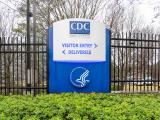May 6, 2011 (CIDRAP News) – Federal funds provided through the Hospital Preparedness Program (HPP) have enabled hospitals across the nation to make substantial advances in preparedness for many kinds of public health emergencies, including epidemics, according to the first state-by-state report on the program, released yesterday.
More than 76% of participating hospitals met at least 90% of program standards for all-hazards preparedness in 2009, the Department of Health and Human Services (HHS) said in a press release about the report. The standards cover a range of capabilities, such as surge capacity plans and systems for communicating with other hospitals and public health agencies.
The thrust of the report, titled "From Hospitals to Healthcare Coalitions: Transforming Health Preparedness and Response in our Communities," is that hospital preparedness has come a long way since the HPP was born in the aftermath of the terrorist and bioterrorist attacks of 2001.
85% participation
The HPP provides funds, technical help, and hospital preparedness guidelines to all states, eight US territories, and four large urban areas. More than 85% of the 6,300 US hospitals participate, according to the HHS release. The latest round of grants, announced in July 2010, totaled $390.5 million.
The new report gives a brief history of the program and provides a profile of each participating jurisdiction (state, territory, or metro area). The profiles show what percentage of hospitals met each performance measure in 2009 and provide statewide data on certain capabilities, including surge capacity. In addition, each profile gives an example of an achievement or response that was facilitated by HPP funds.
The report uses graphs to show the percentages of hospitals that met the performance measures, which cover:
- Improvement plans based on after-action reports
- Participation in exercises or incidents
- Medical evacuation and shelter-in-place plans
- Mass fatality management plans
- Interoperable communication systems
- Use of the Incident Command System (ICS)
- Adoption of the National Incident Management System (NIMS)
- Reporting of available beds to the relevant emergency operations center within 60 minutes
For California, for example, the profile shows that 100% or nearly 100% of hospitals met the standards for improvement plans, regional exercises, communication systems, ICS and NIMS, and reporting of available beds. About 75% of hospitals had medical evacuation plans and mass fatality management plans.
On statewide capabilities, the report shows that California had 781 "24-hour surge staffed beds" per 100,000 population, 0.4 trauma center per 100,000 population, 2,796 health professionals registered to work as emergency volunteers, and the ability to decontaminate 248 people per 100,000 population in a 3-hour period.
Several of the profiles describe how jurisdictions used HPP funds to enhance their response to the 2009 influenza pandemic. For some examples:
- Arkansas used the funds for an H1N1 mass vaccination program, including drive-through clinics that enabled elderly and people with disabilities to get vaccinated without leaving their cars. County vaccination clinics dispensed 306,200 doses.
- Delaware used the money to recruit and train Medical Reserve Corps members to help vaccinate people in high-risk groups outside of schools. The effort reached more than 5,870 residents.
- New York City's health department used HPP funds to prepare hospital emergency department expansion plans and oversee the seasonal and pandemic flu vaccination campaigns in hospitals. In addition, the program helped city hospitals create new and non-traditional surge capacities to manage the epidemic.
- Wisconsin's HPP maintains an alerting system that enables hospitals, emergency medical services, and others to share medical equipment in emergencies. When one hospital needed a high-oscillating ventilator for an H1N1 patient in respiratory distress, it sent an alert through the system and was able to obtain the equipment quickly from another hospital. The Wisconsin HPP also maintains three strategically located stockpiles of supplies and equipment for use in emergencies.
Looking to the future, the report says it is now time to extend preparedness beyond hospitals to other healthcare facilities and services. "The HPP is at a point in its evolution where significant enhancements are necessary in order to more broadly include the entire healthcare community and to make preparedness a community attribute instead of a facility one," it states.
See also:
May 6 HHS news release
http://www.hhs.gov/news/press/2011pres/05/20110505a.html
Full HHS report
http://www.phe.gov/Preparedness/planning/hpp/Documents/hpp-healthcare-coalitions.pdf


















